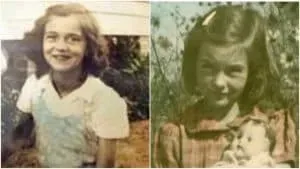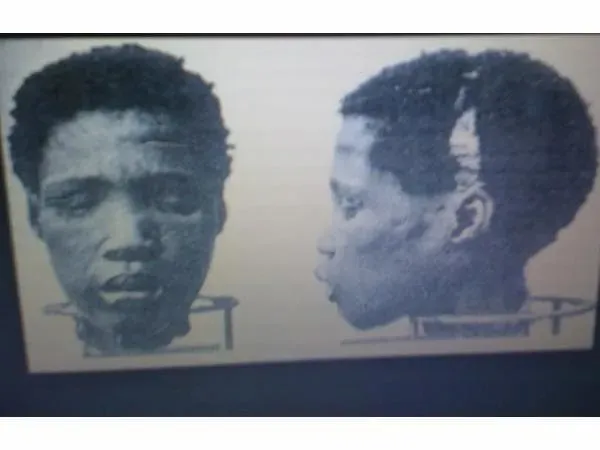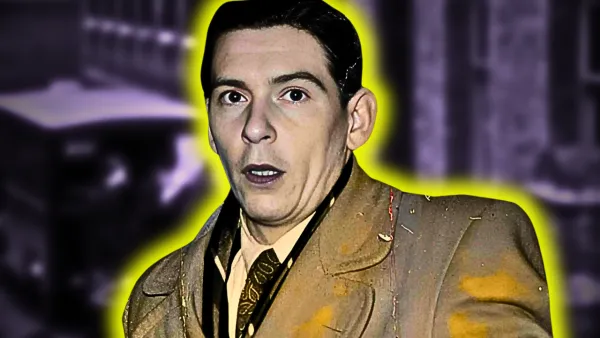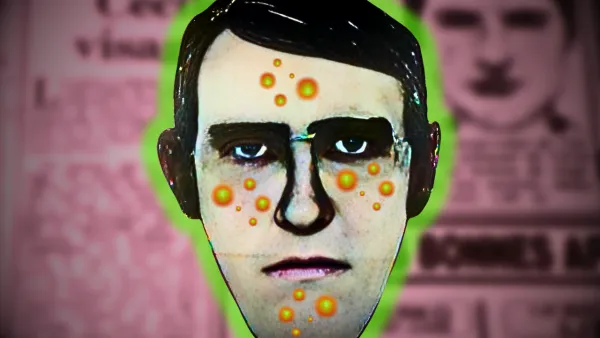George Stinney Jr., The Youngest Person To Be Legally Executed In The United States

On June 16, 1944, the State of South Carolina legally executed George Stinney Jr., a 14-year-old African American boy, by sending over 2,400 volts of electricity through his body until he was dead. Stinney Jr. was accused of murdering Betty June Binnicker, 11, and Mary Emma Thames, 7, while they were out picking maypop fruits. Now over 70 years later George Stinney Jr. has been fully exonerated for his crimes, the murder he didn’t commit.
Despite the gap in their ages, 11-year-old Betty June and 7-year-old Mary Emma Thames were close friends. Together they loved riding bicycles, spending time together, and picking flowers. And on March 23, 1944, the weather in Alcolu, South Carolina couldn’t have been any better to pick maypops, small southern fruit popular in jellies.
Binnicker’s mother, Vermelle, gave the girls a pair of scissors, because maypops grow on vines, and made the girls promise they would be home in 30 minutes. As Vermelle prepped supper, the 30-minute curfew she gave to the girls had came and passed with still no sign of either girl. The worried mother alerted her husband and within an hour the entire small town of Alcolu joined to find Betty June Binnicker and Mary Thames.
An all day search turned up nothing and now fearing the worst, searchers started back up at dawn, destined to find the missing girls. Down Greenhill Road and behind the Greenhill Baptist church about 300 feet contained a briar patch, a weeded area, and a small ditch. One of the search party members, Scott Lowder, noticed footprints leading up to the ditch. The shoe indentations left a notable trail since it had rained heavily the day before the girls went missing. Also in close proximity to the soggy footprints were the scissors loaned out to the two girls for picking maypops. Further into the ditch lay both girls, slain.
"Beaten Beyond Recognition"

The positioning of the dead girl’s bodies was peculiar. Both lay face up and side-by-side, submerged in two to three inches of swampy water. Betty June Binnicker’s bicycle had its front wheel completely detached and said wheel was placed on top of her chest. Both girls had been brutally “beaten about the head.” The backside of Binnicker’s head was crushed in several places and as for the 7-year-old Thames, she was “beaten beyond recognition” according to reports.
An important note about the crime scene that was unfortunately not investigated throughly was for the amount of head wounds inflicted on the two girls. There was very little blood present at the scene. In fact, according to Dr. Peter J. Stephens, a forensic pathologist who gave an expert opinion in 2014 regarding the medical examination of the bodies, claims “scalp lacerations are classically and characteristically very, very bloody. When there is a laceration, or especially if there is enough laceration to cause fragmentation of the underlying bone, these are going to bleed profusely.” The absence of blood at the crime scene concerns and could mean both Binnicker and Thames were moved to this dump site from a previous location.
14-year-old Arrested For Murder
Depending on which Alcolu resident you ask, George Stinney Jr. was a bully or a normal, shy, and mid-mannered 14-year-old boy. Stinney’s family would claim, and some still do 70 years later, that George had no interest in girls and was even a positive role model for other younger children. Being one of the smartest children in his class, he would help others with their homework. Family members recall George carrying a notepad and pencil anywhere he went and drawing passing planes as they flew overhead during the daytime.
However, other Alcolu residents didn’t, and some still do not, share the same enthusiasm for George Stinney Jr. Mr. W. L. Hamilton was George’s teacher at the time of the murders, "I remember the day he killed those children, he got into a fight with a girl at school who was his neighbor. In those days you didn't have to worry about children carrying guns and knives to school, but George carried a little knife and he scratched this child with his knife."
Betty June Binnicker’s niece, Mrs. Frankie Dyches, claims, “He was a bully, and he had a very short fuse.”
A Confession

Whether George Stinney Jr. was a bully or a saint, either way he confessed to the murders of Betty June Binnicker and Mary Emma Thames after their bodies were discovered by local searchers. Clarendon County Sheriff’s Deputy H.S. Newman was the arresting officer and despite of no written confession being presented to jurors, the 14-year-old killed the two girls by “accident” after trying to have sex with Binnicker.
George’s story went through several adaptations, claiming first he was trying to help one girl out of the ditch to wanting to have sex with the oldest. Even in today’s society we have trouble recognizing a potential false confession, so most people believe that Stinney’s was completely coerced.
According to the deputy sheriff,
“[Stinney] came upon the children near the Alderman Lumber Mills where they had gone to pick flowers about 3 p.m. He made advances to the younger girl, a first-grade pupil, and she fought him off. When the girls said they intended to tell their parents, he picked up a railroad trestle spike, about a foot long, and struck the younger girl several times in the head.”
The sheriff continues, “The older girl attempted to help her little friend and Stinney also said he felled [sic] her with a spike. Taken into custody several hours after the bodies were found, Stinney led officers to a spot nearby where he said he had concealed the spike.”
Was There a Murder Weapon?
According to Sheriff Newman, Stinney knew the exact location of where he dropped the murder weapon, although the weapon was never produced publically or during the boy’s trial. In fact, nobody knows what exactly Stinney used to kill the girls and the item in question ranges from a hammer, to a railroad spike or pin, to an iron rod. The fluidity of the weapons make up was enough to cast doubt on the guilt or innocence of the child.
According to testimony provided by North Carolina forensic pathologist Dr. Peter J. Stephens, the girls showed no signs of defensive wounds, from what he could gather in the 70-year-old case files, and that the absence of such wounds meant to him that the assailant was a “larger assailant with overpowering size and force.”
Did George Stinney Jr., weighing roughly ninety-five pounds, have enough strength, determination, size and force to beat both girls “beyond recognition” enough so that neither he nor Binnicker or Thames presented any defensive wounds?
83 Day Death Sentence
One of the most shocking facts about this case is the time to electrocute George Stinney Jr. In a society where inmates can sit on death row for several decades, the trial, conviction, and execution of this 14-year-old boy is surely a record in speed.
Townsfolk held an inquest on March 29, 1944, which Stinney or his family was in attendance. The only genuine evidence submitted, besides George Stinney’s birth certificate, was a statement from Sheriff Newman. “I was told that Stinney killed those girls, and I was sent to arrest him.”
Some locals will claim that Stinney received a fair trial under the Jim Crowe era in 1944, but most others believe this is not so. The boy’s defense, his only hope of receiving due process, was a local tax attorney by the name of Charles Plowden. Plowden was 31-years-old and has tried none case more serious than tax evasion.
Around 2:30pm on April 24, 1944, Stinney’s future laid in the hands of twelve white male jurors. There was no written confession submitted as evidence. The murder weapon, if there was one, was not submitted as evidence. Plowden did not request any sort of psych evaluation for his client. Plowden did not cross-examine any of the State’s witnesses, and the Stinney family could not attend the trial. The one solid alibi that George Stinney Jr. possessed was his own 8-year-old sister, Aime, who if used a witness by the defense, could testify that her older brother was innocent and she was by his side the entire day. Still to this day, Aime Stinney Ruffner maintains her brother’s innocence, claiming she would follow him everywhere he went as his “shadow”.
Stinney’s Death Mask Slipped Off

Watching any execution by electrocution, especially of a 14-year-old boy, would be a harrowing sight to see. Unfortunately, no effort was made to make Stinney comfortable before his ultimate demise. Phone books to sit on should have been used for his small stature of 5’1”, but they were not. The headpiece should have been more secure, but it was not. Instead, much like the rushed trial and conviction, Stinney was executed in what have must have been one of the most painful deaths of all time.
During the first 2,400 current, Stinney’s head jerked upwards, causing his mask to slip off. On lookers saw tears flow down Stinney’s face and saliva drip from his chin. Once the executioner repositioned the boy’s leather mask, another two waves of high current traveled throughout his body.
George Stinney Jr. was legally executed on June 16, 1944, at Columbia Correctional Institution. He Became the youngest person to be put to death in the 20th century.
A Second Chance
On January 21, 2014, the fate of George Stinney Jr.’s innocence once again rest in South Carolina’s hands. Using a centuries old legal instrument called the Writ of Coram Nobis, attorneys and law professionals reopened Stinney’s case in hopes of an exoneration.
Seven decades have passed since George was electrocuted, and according to many, a great injustice still exists as a stain on South Carolina’s history.
Aime Stinney Ruffner, George’s 8-year-old sister in 1944, would be her brother’s only chance of finally receiving due process. However, many have questioned why it has taken seventy years for the sister to come forward, claiming that she was with her brother on March 23, 1944, as his “shadow”. Her brother couldn’t have committed such an awful crime, because according to Aime, she never left his side. So why come forward now?
Different Times
Most of us were not alive during the Jim Crow Era in which Plessy vs. Ferguson ruled with the mantra “separate but equal”. Our country took a giant leap forward with our abolishment of slavery in 1865, but two steps backwards by opposing unfair laws and treatment on black citizens. Jim Crow laws were in full effect and racial tensions were as palpable as every in this time period.
And on March 24, 1944, when the bodies of Betty June Binnicker and Mary Emma Thames were discovered and the 14-year-old Stinney boy was accused of their murder, the family had no choice but to leave town; without their son.
The entire Stinney family packed what little belongings they could carry and under the over of darkness, escaped Alcolu in a real and probably terrifying fear of local lynch mobs.
The Stinney family no chance or opportunity to help their own son, attend his trial, or even live in the town they once called home. George’s father was immediately fired and the family just left.
Alternative Theory
Many have suggested that George Stinney Jr. did not murder the girls, but that of a prominent white family in the Alcolu area, the Burkes. A distant relative who claims that she and her grandfather have supported this theory were in attendance at Stinney’s trial.
The 14-year-old was brought out in “a cage”, in chains, and was spit on by attending families. The relative, a young girl, claims to have been told repeatedly that “I know that colored boy didn’t do it,” by her grandfather.
George Burke Sr. who was a part of the search party that found the bodies, was also the lumber mill company boss and may have fired Stinney’s father. Some have suggested that they actually found the bodies on the Burke property.
Whether this theory is true, there is interesting evidence to back it up, or at least point the blame away from Stinney Jr. George’s sister and “shadow”, Aime Stinney Ruffner claimed that after the two girls walked past her and her brother sitting on the train track, a lumber truck also passed toward the girls.
The lumber truck was most likely being driven by Burke senior’s son, Wayne Burke. Wayne later stated that his grandmother suffered from depression after the killings and until her death in 1963. Wayne Burke also died three years after the murder from a chronic kidney illness.
The theory of the Burke family being responsibility is plausible, especially if we look back at the condition of the bike being pushed by 11-year-old Betty June Binnicker. Many have claimed that the bicycle was bent, possibly by being hit by a lumber truck, and also the front wheel was detached and resting on Binnicker’s chest.
Even front wheels on bicycles made today can be difficult to detach, not to mention her was removed in 1944. Did George Stinney Jr. possess the strength to tear off the front wheel of the bicycle without the use of tools?
Aftermath
Whether the Burke family had anything to do with the murder or not, George Stinney Jr. was executed by electrocution on June 16, 1944, in the Columbia Correctional Institution (CCI).
George Stinney Jr. was the youngest person to be legally executed in the United States within the 20th century.
If you like this post, please share it!





